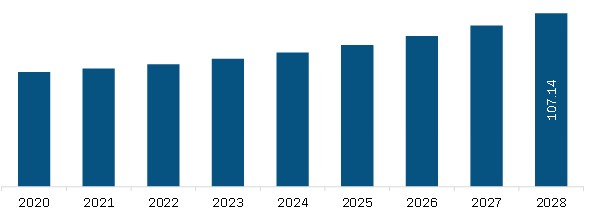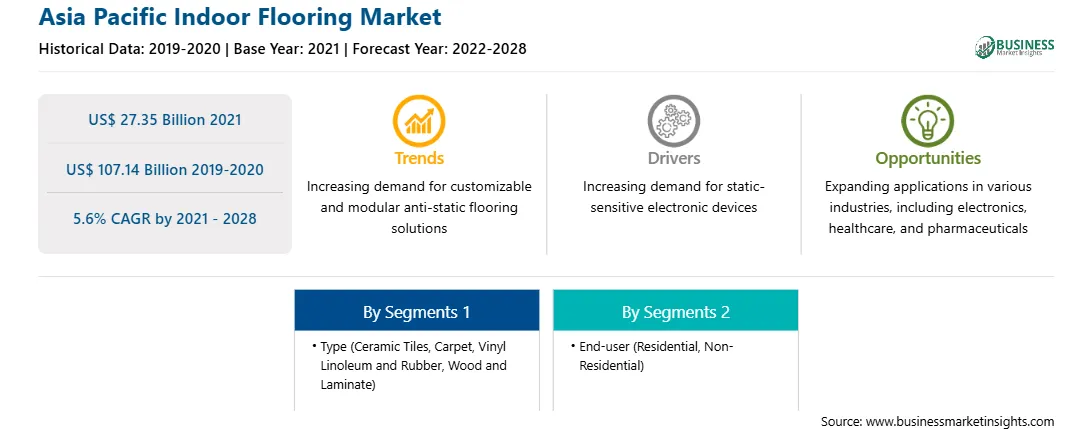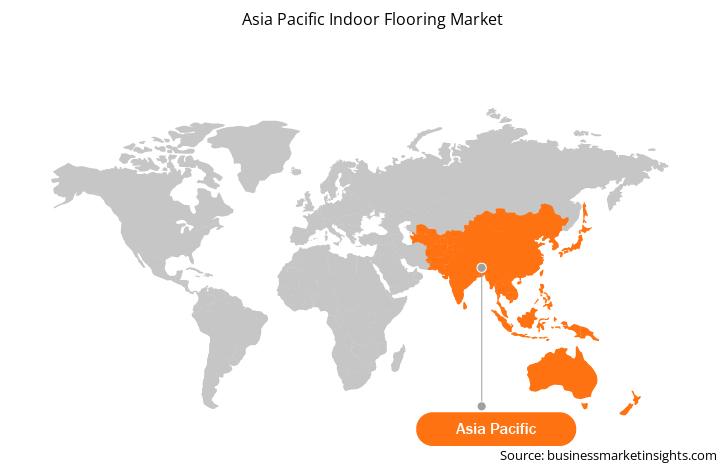R&D facilities, laboratories, biotechnology labs, and clean rooms, which are among high-capital ventures, might face severe consequences of downtime caused by flooring or floor coating. In such cases, fast-cure floor coatings are used to avoid downtime or keep it to a minimum. The recently developed carpet, vinyl, linoleum, and rubber coatings are being applied on the interior as well as exterior surfaces. With ever-increasing time pressure on contractors to return the floor to service as early as possible, the development of a fast-cure floor coatings is emerging as a boon for building contractors and personnel involved in the indoor flooring applications. The use of fast-cure indoor flooring systems can also help contractors save on labor costs due to the quick application in the confined time frame. Further, the short curing time is associated with minimizing labor hours.
APAC is characterized by many developing countries, a positive economic outlook, high residential and industrial presence, huge population, and rising disposable income. All these factors make APAC a major growth driving region for various markets, including indoor flooring. The lockdown of various factories in China affects the global supply chains and negatively impacts development, delivery schedules, and various products and services. Even as the factories in China are beginning to reopen, several businesses have reduced or hit pause on their operations. According to world meter till 24th March, 2021 90,147 cases have been registered in China. The region comprises of several developing countries, which consist of old indoor infrastructure with the old interiors such as flooring. During lockdown the process of maintenance and renovation of home and other infrastructure got hampered, with the deployment of advanced indoor flooring. Besides, the most commonly recorded consequence of COVID-19 is a significant labor shortage in China. The construction industry in China is heavily reliant on rural migrant labor, with 54 million rural migrant workers employed in the industry, according to the National Bureau of Statistics of China. Since the lockdown, migrant workers who had returned to their hometowns for the Lunar New Year holiday were unable to return to work. In a survey conducted by the China Building Industry Association and released on 15 April 2020, 90.55 percent of respondents said development had been hampered, and 66.04 percent reported a labor shortage. Besides, According to Oxford Economics, China's annual construction production will slip by 8% this year but increase by 14.5 percent in 2021. India's production is forecast to fall 5.4 percent this year, before rebounding to 7.7 percent in 2021.
With the new features and technologies, vendors can attract new customers and expand their footprints in emerging markets. This factor is likely to drive the Asia Pacific indoor flooring market. The Asia Pacific indoor flooring market is expected to grow at a good CAGR during the forecast period.

Strategic insights for the Asia Pacific Indoor Flooring provides data-driven analysis of the industry landscape, including current trends, key players, and regional nuances. These insights offer actionable recommendations, enabling readers to differentiate themselves from competitors by identifying untapped segments or developing unique value propositions. Leveraging data analytics, these insights help industry players anticipate the market shifts, whether investors, manufacturers, or other stakeholders. A future-oriented perspective is essential, helping stakeholders anticipate market shifts and position themselves for long-term success in this dynamic region. Ultimately, effective strategic insights empower readers to make informed decisions that drive profitability and achieve their business objectives within the market.

| Report Attribute | Details |
|---|---|
| Market size in 2021 | US$ 27.35 Billion |
| Market Size by 2028 | US$ 107.14 Billion |
| Global CAGR (2021 - 2028) | 5.6% |
| Historical Data | 2019-2020 |
| Forecast period | 2022-2028 |
| Segments Covered |
By Type
|
| Regions and Countries Covered | Asia-Pacific
|
| Market leaders and key company profiles |
The geographic scope of the Asia Pacific Indoor Flooring refers to the specific areas in which a business operates and competes. Understanding local distinctions, such as diverse consumer preferences (e.g., demand for specific plug types or battery backup durations), varying economic conditions, and regulatory environments, is crucial for tailoring strategies to specific markets. Businesses can expand their reach by identifying underserved areas or adapting their offerings to meet local demands. A clear market focus allows for more effective resource allocation, targeted marketing campaigns, and better positioning against local competitors, ultimately driving growth in those targeted areas.

The Asia Pacific Indoor Flooring Market is valued at US$ 27.35 Billion in 2021, it is projected to reach US$ 107.14 Billion by 2028.
As per our report Asia Pacific Indoor Flooring Market, the market size is valued at US$ 27.35 Billion in 2021, projecting it to reach US$ 107.14 Billion by 2028. This translates to a CAGR of approximately 5.6% during the forecast period.
The Asia Pacific Indoor Flooring Market report typically cover these key segments-
The historic period, base year, and forecast period can vary slightly depending on the specific market research report. However, for the Asia Pacific Indoor Flooring Market report:
The Asia Pacific Indoor Flooring Market is populated by several key players, each contributing to its growth and innovation. Some of the major players include:
The Asia Pacific Indoor Flooring Market report is valuable for diverse stakeholders, including:
Essentially, anyone involved in or considering involvement in the Asia Pacific Indoor Flooring Market value chain can benefit from the information contained in a comprehensive market report.